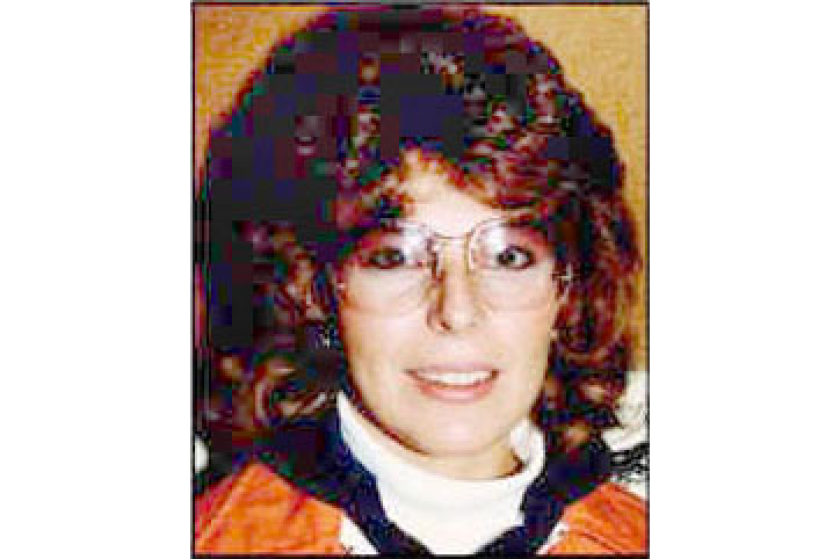HOFFMAN, Minn. — Court documents newly obtained by Forum News Service show the man who was acquitted in the 1981 brutal murder of his girlfriend, 18-year-old Karla Jo Nieland, at a farm party had first asked a judge to dismiss second-degree murder charges on the grounds that he did not intend to kill her.
The newly obtained Minnesota Supreme Court documents relate to appeals the defense team filed prior to the trial of John Keep. They argue damage to Nieland caused by the horsehoe ring Keep wore on his right hand shows Keep made “backhand slaps," not "bludgeoning blows."
ADVERTISEMENT
The newly obtained Minnesota Supreme Court documents relate to appeals the defense team filed prior to the trial of John Keep. They argue damage to Nieland caused by the horsehoe ring Keep wore on his right hand shows Keep made “backhand slaps," not "bludgeoning blows."
Keep's legal team also argued he was drunk and not in a state of mind to kill Nieland.
In addition to arguments that Keep should not stand trial for second-degree murder, his legal team also appealed to have him tried as a juvenile, based on arguments that he wasn’t a threat to the public.
Keep was 17 years old at the time of Nieland's death.
Full story: https://www.inforum.com/news/the-vault/karla-jo-nieland-was-murdered-at-a-1981-minnesota-farm-party-now-new-documents-reveal-complexities-in-case
Written and narrated by Trisha Taurinskas
Keep's legal team also argued he was drunk and not in a state of mind to kill Nieland.
In addition to arguments that Keep should not stand trial for second-degree murder, his legal team also appealed to have him tried as a juvenile, based on arguments that he wasn’t a threat to the public.
Keep was 17 years old at the time of Nieland's death.
Both appeals were rejected, and Keep stood trial on charges of second- and third-degree murder for the death of Nieland. He was acquitted on both charges.
The newly obtained documents shine light on a case whose details have been largely shrouded from the public through sealed court and trial documents.
Forum News Service reported in 2022 that public documents associated with the murder trial of John Keep were sealed from the public by Judge Amy Doll, who was appointed to the Eighth Judicial District in 2016.
Forum News Service filed for access to the sealed records in 2022, but has since not received a response. Forum News Service reached out to Keep and received a response from his lawyer, indicating he did not wish to comment. Keep's lawyer requested Forum News Service no longer attempt to contact his client.
ADVERTISEMENT
The case of Karla Jo Nieland
Karla Jo Nieland was 18 years old when she was discovered beaten to death inside a car, parked outside a farm in rural Minnesota in the early hours of May 17, 1981.
The car in which her body was discovered belonged to Nieland’s then-boyfriend, fellow classmate John Keep. Her blood was discovered on his body, and lacerations on her face matched the shape of a ring he wore.
Keep was arrested and charged for the murder of Nieland, yet was acquitted when a jury returned a “not guilty” verdict after mere hours of deliberation.
Local law enforcement believed it was a “slam dunk” case, with clear evidence pointing the finger toward Keep. Yet that verdict—and sentiment among law enforcement at the time—has left the Minnesota communities of Kensington and Hoffman to wonder, for decades, if Nieland’s killer was allowed to walk free.
A not-so-simple case
Authorities at the time said Nieland’s beating was the worst they had seen.
She was discovered, shirtless, in the passenger’s seat of Keep’s vehicle. Nieland had been beaten in nearly all areas of her body, including her legs, arms, upper chest and face. She was then strangled.
Her shirt, sweater and bra were discovered in a field on the farm's property. Keep’s shirt and car keys were discovered nearby, in that same field.
ADVERTISEMENT
Nieland was likely unconscious from blows to the head by the time she was strangled to death according to Dr. Larry Fapp, the Grant County Coroner, and Dr. Mehdi Orandi, the pathologist who conducted the autopsy.
A horseshoe ring, worn by Keep, seemed to match multiple lacerations found on Nieland’s face, according to Minnesota Supreme Court documents.
For law enforcement arriving on the scene, it appeared as though a drunken disagreement led to a murder—an angry boyfriend had seemingly snapped, causing the violent death of a young woman.
The coroner estimated Nieland’s time of death at around 3:30 a.m., earlier in the morning her body was found.
A friend of the couple, whose home was located on the farm property, told law enforcement that he spoke to Nieland and Keep at around 3 a.m., before going to bed, according to court documents. The conversation took place in the field where the couple’s belongings were later discovered.
Keep had allegedly admitted to that same friend, in a panic, following Nieland’s death, that he had killed her, according to court documents.
Keep had a history of alcohol abuse, and had been in and out of treatment facilities. Just months before her death, Nieland and Keep planned on having a baby. Court documents reveal that pregnancy ended in a heartbreaking miscarriage.
ADVERTISEMENT
Those close to the couple alleged that Keep had hit Nieland in the past, according to court documents.
With physical evidence, witness statements and pattern of alcohol use and abuse, Grant County officials were confident when just days later they arrested Keep on second- and third-degree murder charges related to Nieland’s death.
Appeal for juvenile court
Prior to the public trial and not-guilty verdict, Keep’s legal team was fighting another battle, one that sought to keep his case in the juvenile justice system.
Newly obtained Minnesota Supreme Court documents related to this case wrestled with the argument over whether Keep should have been tried as an adult. He was 17 years old at the time of Nieland’s death.
Keep’s team claimed that Keep should have been tried as a juvenile, in part, because the public safety would not be served any better by trying him as an adult.
Keep’s team also argued for second-degree charges to be dropped, as the charge insinuates intent to kill.
Keep’s legal team argued that Keep did not intend to kill Nieland. Instead, they made the argument that Keep didn’t want the victim to die from the violence he inflicted.
ADVERTISEMENT
The horseshoe marks on her face, for example, are attributed by his legal team to have been made by “backhand slaps'' and not “bludgeoning blows” as if he was “trying to kill her.”
Keep’s legal team cited evidence that he wore his horseshoe ring on his right hand, which would be consistent with backhand slap marks on the left side of Nieland’s face. A slap, they argued, didn’t show an intent to kill.
“His actions were not those which would be expected of one who intends to and does commit murder,” the appeal states.
Keep’s team goes on to argue that his intoxicated state altered his ability to attempt to kill Nieland. Keep sought immediate help from the friend who lived on the farm property, along with help from his parents. He also complied with law enforcement.
All of this, they argued, showed that Keep was intoxicated and not in a state of mind that would allow one to intentionally kill another individual.
“The fact and manner of death may make a person shudder, but to say that the juvenile intended to effect this victim’s death is contrary to the evidence taken as a whole and a clearly erroneous interpretation of the provisions,” the appeal states.
In the end, the judge ruled against the appeal. Keep stood trial in Grant County Court as an adult on third- and second-degree murder charges.
ADVERTISEMENT
Beyond a reasonable doubt?
Moving on to the trial, Keep’s defense pivoted.
It was time to prove, despite the evidence against Keep, that there could be more to the story of what happened to Nieland the night of her death.
There was one aspect of Keep’s recollection of the evening of Nieland’s death that the investigators and prosecution may have underestimated.
The individual who said Keep had allegedly told him he killed Nieland was the same person who stated he saw Keep and Nieland together less than an hour before her death.
Keep claimed that the individual who testified against him had actually knocked him in the back of the head around the time of Nieland’s death, hard enough to cause him to black out.
In a sense, the defense insinuated that the friend pointing the finger at Keep could have had a part in Nieland’s death.
It worked.
The defense painted a picture of a young man who was in love—a young man who was possibly framed for the murder of his girlfriend.
In court, Keep took the stand. He wept as he talked about his deep love for Nieland.
His defense team stated her blood was discovered on Keep because, when he found her in his vehicle, he tried to save her. He held her in his arms, Keep said on the stand.
The defense pointed to his cooperation with law enforcement, his heartache and his attempts to get help in the moments after he discovered Nieland’s body as further reason for the jury to question whether Keep, without a reasonable doubt, was guilty of murdering his girlfriend.
After just hours of deliberation, the jury returned its verdict. Keep was found to be not guilty in the murder of Nieland.
The community was, and still is, in shock.
The case remains an open investigation, according to Grant County Sheriff Mark Haberer.
No suspects have been named or arrested since the trial.
In a 2022 interview with Forum News Service, Grant County Attorney Justin Anderson said there hasn’t been much movement on the case.
“It is certainly possible that the person who committed that murder has been acquitted of that murder,” Anderson said.


































